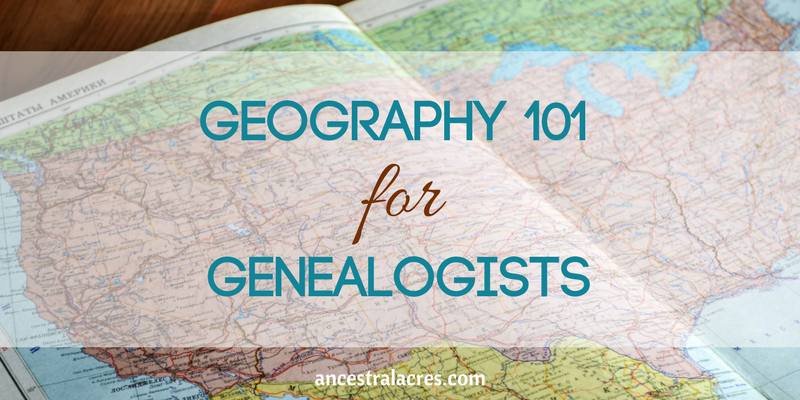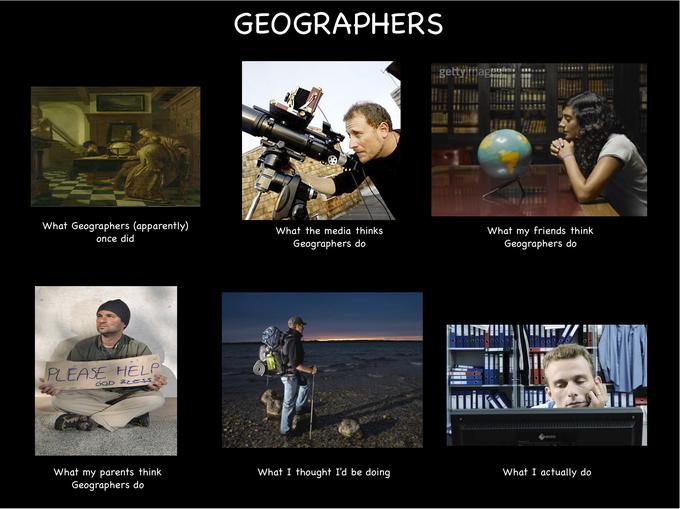
Geography 101 for Genealogists
When you think about geography, what comes to mind? Maybe flashbacks of memorizing all the state capitals in school? In sixth grade, we had to learn all the countries of the world continent by continent—and spell them correctly! I don’t think it’s unreasonable to say that most people think of geography as just names of places on maps. Since this is the inaugural post on my blog, I thought I would give a quick overview on this topic to set the stage for the dozens of other blog post ideas that I have brewing.
The Study of Geography
Geography as an academic discipline strives to tell the story of the world and its inhabitants spatially—that is, within “space.” Geographers like to think of it as the “mother of all sciences” because it brings together all of the sciences under the umbrella of place. Geographers seek to understand how and why things are distributed across the landscape and how they interact with each other.
The discipline of geography is generally broken into two main fields: physical geography and cultural geography. Physical geographers study distributions and patterns of natural phenomenon on the earth’s surface including the land, climate, plants, and animals. Cultural geographers generally study people and society—where and how they are distributed throughout the world and how they interact or relate to one another. Topics of interest include languages, settlement patterns, religions, and the like. Geographers end up in a variety of careers. I’m like the guy in the last photo for sure!

The Five Themes of Geography
Study of physical and cultural geography intersects frequently, as you can imagine. The physical landscape affects where people have chosen to settle and how they have developed the landscape, what kind of food they grow, what kind of jobs they have, transportation options, and so on. People can also change the landscape and natural world with agriculture, development, wars, and pollution. In fact, in the 1980s, the Five Themes of Geography were developed as national guidelines for teaching America’s students this topic. They are:
- Location
- Place
- Human-Environmental Interaction
- Movement
- Region
(Please read this great article for further details.)
Geography & Genealogy
The truth about genealogy is that, although you might believe that it has something to do with history, it actually has something more to do with geography.1 – Melinda Kashuba
As genealogists, we strive to identify people and their kin accurately. This cannot be done without the consideration of geography. In fact, one of the first records people consult while researching ancestors requires basic geography to know where to look: the US census.
Think about other ways geography impacted your ancestors in terms of the five themes:
- Where did they live? How far away were they from other family or community members? (Location)
- What type of community did they live in? What did the landscape look like? (Place)
- How did the climate affect which crops were grown? Did they take advantage of natural resources? (Human-environmental interaction)
- Why and how did they migrate from one place to another? (Movement)
- What religion did they belong to and was it practiced widely in their area? (Region)
The answers to these questions can often lead you to records or other resources you may not have considered previously. So when pursuing elusive ancestors, I’d like you to put a geographic spin on your research. Asking a geographic question may help solve a particular research problem or enlighten a family history story.
As I continue to add more posts to this blog, I will explore these five themes of geography in the context of genealogy with informative posts, resource guides, tutorials, and case studies.
I’m thrilled you are here and hope you will find something useful to your family history research!